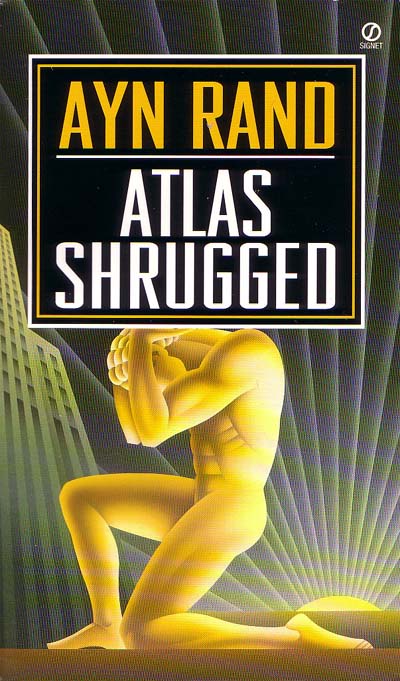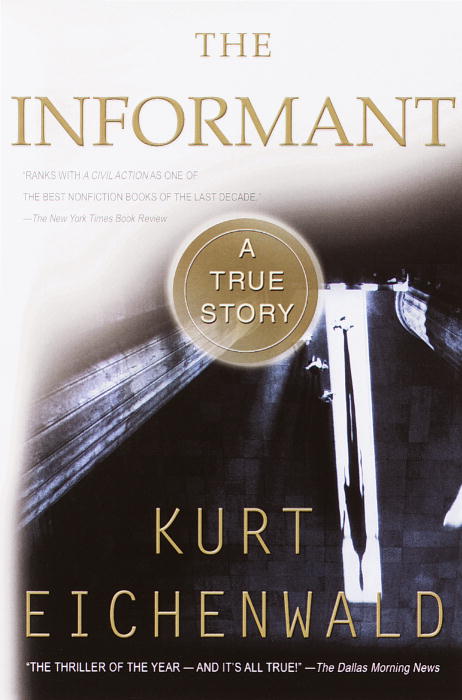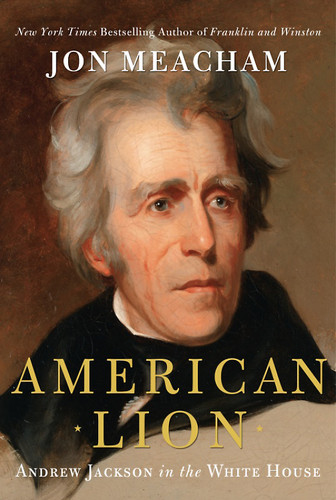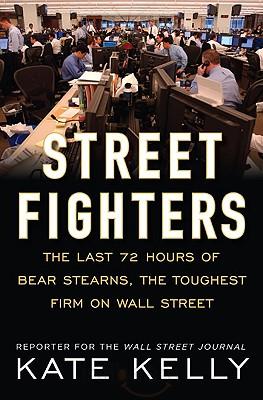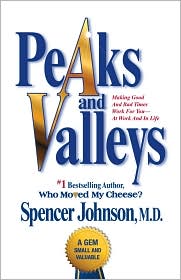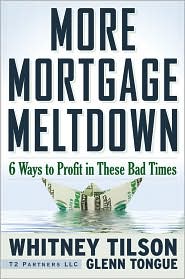Escapist fluff should make a big comeback this summer. In a world of bad economic news, who wants to read about business?
Odd as it may sound, however, now is an especially good time to pick up business books. A delicate economy and stiff competition beg you to hone your skills, not ignore them. The list below represents a healthy mix of topics, with a few parables and a true-crime story thrown in to satisfy the urge for summer fun:
1. Atlas Shrugged
by Ayn Rand
What happens when the government takes control over private industry? Atlas Shrugged, first published in 1957, describes a dystopia that is especially relevant today. The Wall Street Journal’s Stephen Moore has an excellent description of the themes in Atlas Shrugged:
Politicians invariably respond to crises — that in most cases they themselves created — by spawning new government programs, laws and regulations. These, in turn, generate more havoc and poverty, which inspires the politicians to create more programs . . . and the downward spiral repeats itself until the productive sectors of the economy collapse under the collective weight of taxes and other burdens imposed in the name of fairness, equality and do-goodism.
The 1,000+-page Atlas Shrugged describes Rand’s Objectivist philosophy through the allegory of protagonist Dagny Taggart, the VP of Operations for the world’s biggest railroad company. The government drives Taggart’s company into bankruptcy through red tape and taxes, compounding a national problem of disappearing industrialists. When the government finally drives industry into the ground, it calls on John Galt, a heroic businessman, to save the economy.
Though the book can be laborious at times, Rand’s eerily poignant descriptions will provide valuable perspective on life in America today.
2. 10-10-10
by Suzy Welch
Former Harvard Business Review editor-in-chief Suzy Welch challenges readers to ask three deceptively simple questions: What are the consequences of a given decision in 10 minutes? 10 months? 10 years? Welch describes how the 10-10-10 method crystallizes even the most difficult decisions, helping people make choices true to their values. This relatively short, engaging read uses anecdotes and Welch’s personal story to help readers harness 10-10-10 in work, love, career, child-rearing, and everyday decisions. A fun, worthy, and inspiring read.
3. The Forgotten Man: A New History of the Great Depression
by Amity Shlaes
Many accounts of the Great Depression highlight the heroism of FDR’s New Deal, while criticizing the bankers and Republicans behind the excesses of the 1920s. Shlaes, on the other hand, claims FDR prolonged the Great Depression through experimental, anti-business, and politically charged policies. Shlaes expresses her argument through stories of individuals during 1927-1940. By diving into the heads and hearts of policymakers, businessmen, economists, activists, and the victims of restrictive regulations—small businessmen—Shlaes brings a human element into an oft-dry topic. Any taxpayer who feels “forgotten” during today’s bailouts will benefit from the perspective this 433-page book offers.
4. The Informant
by Kurt Eichenwald
It’s hard to believe that this true crime story, starring agribusiness giant Archer Daniel Midland (ADM), isn’t a novel. The meticulously researched story recounts the six-year FBI price fixing investigation of the company that started in 1992. The FBI thought that star witness and ADM executive Mark Whitacre would seal their case against ADM, but soon discovered that Whitacre was manipulating them in order to cover up his own crimes. Eichenwald, a New York Times journalist, turns months of dry research into a page-turning thriller. ADM’s size and scope—their CEO, for example, singlehandedly ensured corn syrup became the national sweetener—make this exciting book both relevant and frightening.
5. American Lion
By Jon Meacham
This Pulitzer-winning book brings to life President Andrew Jackson, the famous face on the $20 bill. The story follows Jackson through his eight years in the White House, describing his motivations, character, and past in incredible detail. The author endears Jackson to readers not as a legend, but as a very human leader. For example, an excerpt from the prologue, typical of the book’s style, reads:
Jackson was fond of well-cut clothes, racehorses, dueling, newspapers, gambling, whiskey, coffee, a pipe, pretty women, children, and good company.
At 340 pages, the book is long, but its high entertainment value melts away the hours. An illuminating read for anyone curious about Jackson or American history in general.
6. Street Fighters: The Last 72 Hours of Bear Stearns, the Toughest Firm on Wall Street
Wall Street Journal writer Kate Kelly covered Bear Stearns’ collapse in three popular WSJ narratives. Street Fighters is the expanded version of those articles, detailing the financial giant’s collapse hour by hour. Her coverage of the individuals involved, from paralyzed CEO Alan Schwartz to former Secretary of the Treasury Hank Paulson, gives a potentially anonymous Wall Street catastrophe a human face.
7. Peaks and Valleys
by Spencer Johnson
This short, quick read uses the parable of a young man leaving his comfort zone (a steady, but boring valley) to explore new heights of success and satisfaction (peaks). Johnson, teaching through the wise old man who guides the young man on his journey, emphasizes that peaks and valleys are connected. Making wise decisions during valleys, or down times, will help create peaks, or good times. The converse—making bad decisions during good times—will lead to deeper valleys. Ups and downs are inevitable, but navigating them effectively makes for more peaks, less valleys, and a more fulfilling life overall. If you’re dealing with painful change, this book will help level your outlook.
8. More Mortgage Meltdown: 6 Ways to Profit in These Bad Times
by Whitney Tilson and Glenn Tongue
Fund managers Tilson and Tongue offer readers six easy ways to profit off investments, even during the worst of times. They start by explaining, in laymen’s terms, what caused the bubble, what happened when it burst, and why the global financial disaster isn’t over. Once readers understand the crisis’ dynamics, the authors describe how to take advantage of the crisis by value investing. They highlight their techniques using case studies, including Berkshire Hathaway and American Express. Overall, the book is a useful primer—and reminder—about value investing during difficult times.
9. How The Mighty Fall: And Why Some Companies Never Give In
by Jim Collins
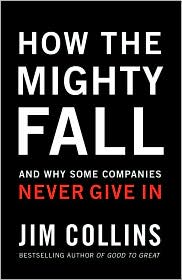
Good to Great author Jim Collins spent four years researching why great companies fail. He discovered that most declines happen in five stages. Once leaders understand each stage, they can identify and arrest their company’s impending failure. Using case studies, including US and Bethlehem Steel, Motorola, and GM, Collins explains how and where specific giants went wrong. His messages: Companies can look outwardly strong, but be on the verge of a bad fall inside. Hubris, lack of discipline, and denial of risk lead to falls. The ability to rebound from setbacks, rather than the absence of them, defines strong companies.
If you want to learn the patterns of how eminent companies corrode from the inside, as well as lessons on avoiding that fate, this is a must-read.
The topic matter sounds boring at first glance—shipping containers are decidedly unsexy—but Levinson crafts a fascinating story on the rise of globalization using the innocuous-sounding box as its vehicle.
Consider some of the consequences of the shipping container:
-Tearing open world markets
-Enabling exponential growth of business
-Making Asia the world’s manufacturing hub
-Killing some trading ports, while helping others burgeon
-Leveling an old union-driven way of life
-Restructuring the world economy
With these outcomes, the box actually becomes exciting. Levinson skillfully weaves in the story shipping container inventor Malcom McLean, adding life to business history. Divided into fourteen easily-digestible chapters, The Box is an illuminating, fun read.
11. Selling the Wheel
by Jeff Cox and Howard Stevens
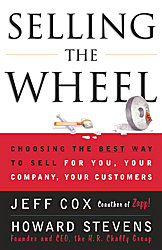
Uses the parable of a man trying to sell a wheel in ancient Egypt, Selling the Wheel teaches that in order to be effective, companies need to tailor their sales tactics to different types of customers. The main message is that there is no such thing as a universally effective salesperson. Instead, companies need to provide value to one of four different kinds of customers, each with unique needs. Only then can they gain a true competitive advantage. Selling the Wheel is a short, engaging reminder that sales tactics truly matter, especially during times of stiff global competition.
12. Barack 2.0: Barack Obama’s Social Media Lessons For Business
by David Bullock and Brent Leary
Using social media to help win an election might be considered the pinnacle of the medium. Love it or hate it, Obama campaign’s brilliant use of social media helped catapult him to the presidency. Social Media Lessons for Business examines the campaign’s use of Facebook, Twitter, YouTube, and other applications as a case study on how businesses can effectively use social media. Obama’s real-life example will help businesses define an effective social media strategy. The short book’s step-by-step format makes strategizing easy.
